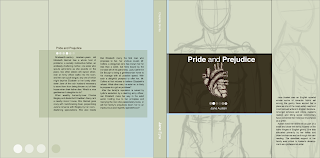Sunday, February 28, 2010
Journal #5 TED Talks
Saturday, February 20, 2010
Monday, February 15, 2010
Journal #4-- Bruce Mau
You have to be willing to grow. Growth is different from something that happens to you. You produce it. You live it. The prerequisites for growth: the openness to experience events and the willingness to be changed by them.
2. Forget about good.
Good is a known quantity. Good is what we all agree on. Growth is not necessarily good. Growth is an exploration of unlit recesses that may or may not yield to our research. As long as you stick to good you'll never have real growth.
3. Process is more important than outcome.
When the outcome drives the process we will only ever go to where we've already been. If process drives outcome we may not know where we’re going, but we will know we want to
be there.
4. Love your experiments (as you would an ugly child).
Joy is the engine of growth. Exploit the liberty in casting your work as beautiful experiments, iterations, attempts, trials, and errors. Take the long view and allow yourself the fun of failure every day.
5. Go deep.
The deeper you go the more likely you will discover something of value.
6. Capture accidents.
The wrong answer is the right answer in search of a different question. Collect wrong answers as part of the process. Ask different questions.
7. Study.
A studio is a place of study. Use the necessity of production as an excuse to study. Everyone will benefit.
8. Drift.
Allow yourself to wander aimlessly. Explore adjacencies. Lack judgment. Postpone criticism.
9. Begin anywhere.
John Cage tells us that not knowing where to begin is a common form of paralysis. His advice: begin anywhere.
Friday, February 12, 2010
Journal #3 -- Twenty Rules
Wednesday, February 10, 2010
Monday, February 1, 2010
Who is Chip Kidd? John Gall? Journal #2
Journal #1 Typography II
Concept Statements
Concept Statements
Jane Eyre series:
Why are women attracted to men? They are so confusing; their harsh, unaffected faces seem severe compared to mine. They always seem like they have something to hide; what is he hiding? Being with him is like being lost in dark haze, brooding, haunted, searching for light, searching for knowledge and truth. I feel lost, I feel like we do not connect. I am angry; he is impassive. Why do I love him then? His harsh exterior, his murky mood, but I am drawn to him like a fly to a bright light in the darkness. There is something there, something human about him, and somehow I have the desire to find it even if I fail.
All you need is love? That can’t be possible. Love does not heal wounds of deceptiveness and malice. I feel lost without her though. My life is dark, my face is dark; I do not feel complete. But, I hate her; I hate her for leaving me, for making me feel this way. She leaves me, his misjudges me, and now I am gone. I sit alone in the dark, thinking, asking, what happened? Her memory seems to fade ever more each day. I must find her. I must bring her back. I am nothing without her, but she makes me feel so empty, so cold. I need her. I love her. She will come for me.
Nicholson series:
Ohmygiddyygosh!!!!! Does he like me? Does he notice me? He is such a part of my world. I need consultation. Yes? No? Maybe? What he needs is to break up with that one girl. Find me. And Voila! Maybe I should say something to him…but what? Should I talk about the weather? Or what he is wearing, or food…no that would make me sound like a fatty. Which reminds me, I need to stop eating for the dance next month. Oh the dance, if I could only go with him. If he could only see me the way I see him. What am I going to do? Oh, he is coming over! I need to check my make-up…
Love, love love. I think I love him. I must love him. We haven’t talked but I do; I know it that I do. Love. Oh love. I talked to my friends. We are getting together soon to converse about the subject. Everyone has a boyfriend, except me. But soon, I think, soon, he will look at me and see stars. “How have I been living without you all of my life?” he will coo to me. Softly whispering into my ear; we are connected. Oh, look at the time! I need to put make-up on and meet the dang! Man, prepare to meet woman!






